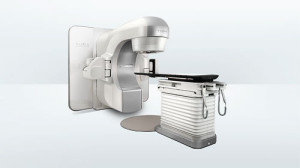Introduction
An Anaplastic Astrocytoma is a malignant type of astrocytoma (Grade 3 astrocytoma). We have a multidisciplinary team approach to offer state-of-the-art treatment regimens of both standard and experimental treatments.
Symptoms
- Symptoms may include seizure, focal neurologic deficit (weakness or speech problems), headaches, personality changes, or visual loss.
Diagnosis
- Magnetic resonance imaging (MRI) is the preferred imaging technique for diagnosis.
- An actual tissue biopsy is typically required for definitive diagnosis.
Treatment
- Surgery
- If possible, we attempt to remove all of the tumor visible on the MRI to relieve pressure on the surrounding brain and improve the effectiveness of certain follow-up therapies.
Advanced technologies such as Neuronavigation surgery and functional brain mapping available with us to help improve surgical outcome.
- Radiation therapy
-
- Six weeks of radiation therapy usually follows surgery.
- Gamma knife (stereotactic radiosurgery) has not been shown to be effective for anaplastic astrocytoma.
- Stereotactic radiotherapy (using the True Beam) may be offered in certain circumstances.
- Chemotherapy
- Standard oral chemotherapy, such as temozolomide (Temoget), is generally given during the radiation treatment with additional doses afterward.
- Wafers loaded with chemotherapy (Gliadel) can be placed at the time of surgery. Ask your neurosurgeon and/or neuro-oncologist about this prior to surgery.
- Clinical research trials
- We offer many of the latest multicenter clinical trials available for anaplastic astrocytoma.








